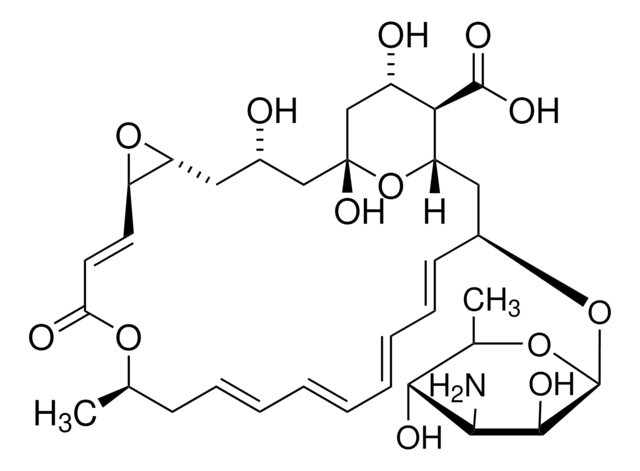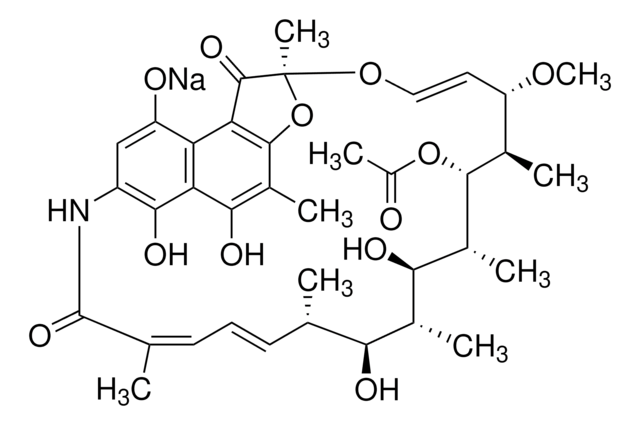P2205
Pentachloronitrobenzene
≥94%
Synonym(s):
PCNB, Quintozene
Sign Into View Organizational & Contract Pricing
All Photos(3)
About This Item
Empirical Formula (Hill Notation):
C6Cl5NO2
CAS Number:
Molecular Weight:
295.33
Beilstein:
1914324
EC Number:
MDL number:
UNSPSC Code:
12352100
PubChem Substance ID:
NACRES:
NA.22
Recommended Products
Quality Level
Assay
≥94%
95%
mp
140-143 °C (lit.)
SMILES string
[O-][N+](=O)c1c(Cl)c(Cl)c(Cl)c(Cl)c1Cl
InChI
1S/C6Cl5NO2/c7-1-2(8)4(10)6(12(13)14)5(11)3(1)9
InChI key
LKPLKUMXSAEKID-UHFFFAOYSA-N
Looking for similar products? Visit Product Comparison Guide
Related Categories
Application
<ul>
<li><strong>Pentachloronitrobenzene Environmental Impact:</strong> Pentachloronitrobenzene (PCNB) is an organochlorine fungicide widely used for seed and soil treatments to control various fungal pathogens and also disrupts murine ventricular wall development by inhibiting cardiomyocyte proliferation, highlighting its significant biological impact and raising concerns about its environmental safety (Gao et al., 2024).</li>
</ul>
<li><strong>Pentachloronitrobenzene Environmental Impact:</strong> Pentachloronitrobenzene (PCNB) is an organochlorine fungicide widely used for seed and soil treatments to control various fungal pathogens and also disrupts murine ventricular wall development by inhibiting cardiomyocyte proliferation, highlighting its significant biological impact and raising concerns about its environmental safety (Gao et al., 2024).</li>
</ul>
Signal Word
Warning
Hazard Statements
Precautionary Statements
Hazard Classifications
Acute Tox. 4 Oral - Aquatic Acute 1 - Aquatic Chronic 1 - Skin Sens. 1
Storage Class Code
11 - Combustible Solids
WGK
WGK 2
Flash Point(F)
Not applicable
Flash Point(C)
Not applicable
Personal Protective Equipment
dust mask type N95 (US), Eyeshields, Gloves
Choose from one of the most recent versions:
Already Own This Product?
Find documentation for the products that you have recently purchased in the Document Library.
Customers Also Viewed
Ting Xu et al.
Journal of agricultural and food chemistry, 55(10), 3764-3770 (2007-04-26)
A competitive enzyme-linked immunosorbent assay (ELISA) for pentachloronitrobenzene (PCNB), a fungicide and chemical intermediate, was developed using a polyclonal antiserum produced against a hapten-protein conjugate of pentachlorophenoxypropionic acid-bovine serum albumin (BSA). An indirect competitive ELISA of PCNB showed an IC50
Eva Holt et al.
Chemosphere, 88(3), 364-370 (2012-04-21)
Chlorinated pesticides can contain impurities of dibenzo-p-dioxins and dibenzofurans (PCDD/Fs), and their precursors, as a result of various manufacturing processes and conditions. As precursor formation of PCDD/Fs can also be mediated by ultraviolet light (UV), this study investigated whether PCDD/Fs
Theodore P Klupinski et al.
Environmental science & technology, 38(16), 4353-4360 (2004-09-24)
Pentachloronitrobenzene is a fungicide that is degraded in anoxic soils and sediments through unknown processes that are often thought to be biologically mediated. The present research describes the kinetics for the abiotic reduction of this compound in aqueous Fe(II)/goethite systems
Didem Okutman Tas et al.
Environmental science & technology, 39(21), 8264-8272 (2005-11-22)
The reductive transformation of pentachloronitrobenzene (PCNB), an organochlorine fungicide, was investigated with a mixed, methanogenic culture developed from a contaminated estuarine sediment. Batch assays performed with this enrichment culture resulted in the biotransformation of PCNB to pentachloroaniline (PCA), which was
J-M Durgnat et al.
Food additives and contaminants, 22(12), 1224-1230 (2005-12-17)
Ginseng extracts are available as ingredients for improving energy and vitality and can be used in functional foods and as flavouring ingredients. A survey was been performed to determine the content of pesticides and toxic metals in ginseng extracts. Forty-seven
Our team of scientists has experience in all areas of research including Life Science, Material Science, Chemical Synthesis, Chromatography, Analytical and many others.
Contact Technical Service












